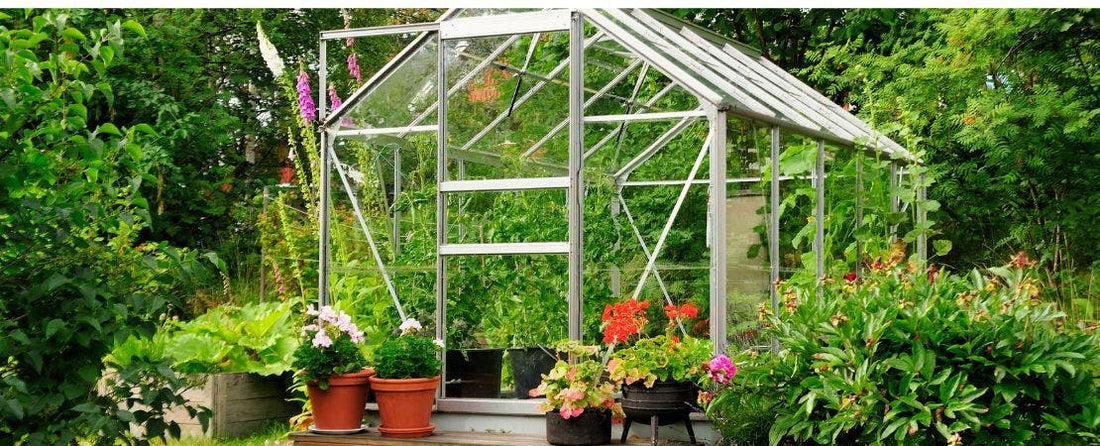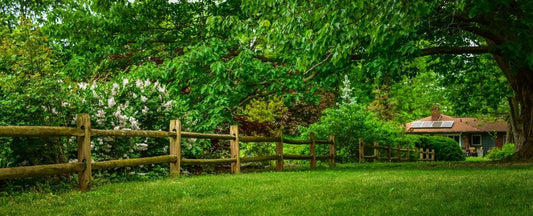Planting for Year-Round Interest in the Garden

Plant Recommendations to Enjoy a Year Round Garden
What are the characteristics of a plant with year-round interest? It could be evergreen and keep its leaves all year. It could change color during the year and stand with graceful bare branches in winter. It could cover itself with interesting fruits or seedpods in fall and hold those during the winter.
Here are a few examples to consider.

Trees That Have Year-round Garden Interest
Acer species, Maples
These can be big shade trees, to 50’, or there are dwarf trees which rarely reach 12’ tall. Before leafing out in the spring, maples make a show of yellow flowers, then light green leaves cover the plant, darkening to the rich green of summer. Some cultivars leaf out in reds or maroons, then turn green. The seed pods, winged samaras, are colorful and abundant. Leaves of maples take a variety of sizes and attractive shapes depending on the species. Some varieties have red or red-brown leaves all summer. In fall they turn red, orange, or yellow in a dramatic display. The winter tree is a graceful bare shape, and can be enhanced by buying a pale-barked variety.
Betula and Populus, Birch and Aspen
Especially paper birch (Betula papyrifera) and river birch (Betula nigra), other Betula species and aspen (Populus). These are small American trees with pale bark. They flower early in the spring with yellow dangling catkins. The leaves flutter in the breeze. They start pale green and darken to rich deep greens. In fall the leaves turn bright yellows, sometimes oranges. When the leaves have fallen, the white bark with dark horizontal lines make them a beautiful sight in your four seasons garden.
Malus hybrids, Crabapples
Crabapples are Eurasian and American small trees, to about 20’ high. The fruits, like those of their close relatives, apples (Malus domestica), are edible, but people rarely bother with them. Crabapples have been developed as flowering ornamentals. The foliage is bright in the spring, big pink buds become lovely deep pink to white flowers. The fruit ripen to bright reds and oranges, and the foliage turns bright, usually yellow, but also orange, copper or plum, depending on the variety. Fruits stay on the tree and attract foraging birds.
Cercis species, Redbuds
These are small trees native to North America and Europe. Some varieties grow to 35’ tall but most are smaller. The pink-purple or white flowers appear in spring while the tree is leafless. Then big heart shaped leaves appear, naturally a rich green but you can find varieties with burgundy leaves and where the new leaves are burgundy and turn yellow, chartreuse, and then green as they mature. In fall, redbud leaves turn yellow, gold, or orange. Redbuds naturally form slightly twisty branches, so that, leafless, the trees are very graceful.
Sorbusspecies Mountain Ash
Mountain ashes are a group of North American small trees, growing to about 30’. They produce creamy clusters of flowers in spring. The feathery compound leaves start pale green and darken to a rich green. By summer they display large clusters of bright orange berries, very attractive to birds. The fall foliage is dramatic, yellow, orange, or reddish-purple depending on the variety. The bright berries remain on the tree after the leaves fall, stunning amid the whites and browns of winter.

Shrubs
Cornus species. Dogwood Shrubs
Several species of American and Eurasian dogwoods, such as red osier dogwood (Cornus sericea), red twig dogwood (C. stolonifera), and C. sanguinea (common dogwood) grow to about 10’ tall, and feature red to purple-black branches and stems. The natural form has richly green leaves, but horticultural varieties include variegated leaves . Clusters of small white flowers are followed by big white berries. Leaves turn red to burgundy in fall. In winter, leafless, the red branches are very handsome against the white of winter.
Rosa species, Roses
Most roses are planted for their beautiful flowers, but the right varieties will provide year-round beauty. In the spring, pretty light green new leaves cover the plants and buds swell. Flowering from late spring, with some varieties continuing well into fall, roses have handsome flowers in colors from white and yellow to rose and deep red. Leaves turn yellow, orange, or red in the fall. Rose hips, the small red fruits, add interest and will stay on the plants into the winter, attracting birds. Many rose hybrids are sterile and do not produce rosehips, so check the details of the varieties if you want the year round garden display.

Evergreens
Use boxwoods and conifers as the backdrop for flowering trees, shrubs with bright fall leaves, or deciduous trees that are attractive when leafless. Their solid beautiful shapes will anchor the garden all year long.
Buxus species, Boxwoods
Boxwoods or box are European shrubs that can reach over 6’ high, with lovely small dark leaves which they keep all year. Easily shaped by pruning, boxwoods form a rich dark contrast all year long.
Coniferous Trees
Pines (Pinus), spruces (Picea), cedars (Cedrus), yews (Taxus), junipers (Juniperus) and arborvitae (Thuja) are evergreen, so they form a handsome shape all year. Yews and junipers also have bright berries that stand out against the dark foliage. The foliage does need not be dark; there are light green to golden varieties available and often the new needles are much lighter and form a handsome contrast.

Nonwoody Perennials
Consider smaller plants in creating year-round garden interest. Choose ones that are evergreen, form interesting clumps, or have attractive seedheads.
Heuchera species, Coral Bells
These two-to-three-foot plants, native to North America, have an incredible array of beautiful leaf colors, from green to maroon to lavender, red, nearly black, and multicolored. Flowers appear in summer as a spike above the plant, with flowers from white and cream to pinks. Many varieties of coral bells are quite cold hardy, staying green (or whatever color their leaves are) well into winter, with leaves present until spring.
Sedum species, Stonecrops
Stonecrops are small succulent plants used as ground covers. Leaves range from yellows and greens to deep reds, often with interesting patterns. The flowers, which appear in late summer, range from white and yellow to magenta and red. Most stonecrops will retain their leaves all winter, perhaps fading a bit, but providing winter interest.
Polystichum acrostichoides Christmas Fern
You can’t beat ferns for interesting foliage. This two-foot-tall American fern begins the year with pale fiddleheads that slowly unfurl into evergreen fronds, rising out of the base like in a fountain. It remains green all winter in most areas.
Echinacea species, Prairie Coneflower
These are native American plants which grow three to four feet tall. The plants have rich green leaves. They flower from midsummer to fall, the flowers white to pink to yellow, orange, red and multicolored. The interesting cone-shaped flowerheads stand above the foliage and remain standing through the winter.
Eryngium yuccifolium Rattlesnake Master
This native American plant forms a two to three inch rosette of green leaves that stick out stiffly. From that in summer emerges a four to five foot flower stalk with silver-blue thistle-like flowers. The seed head turns brown or bronze as the seeds ripen and stands throughout the winter, a visual attraction, and also a source of seeds for birds.

Ornamental Grass
Many ornamental grasses provide handsome shapes and colors in summer and will remain attractive through the winter. Here are two examples:
Muhlenbergiaspecies, Muhly Grass
A group of native American grasses that grows two to four feet tall, depending on the variety, muhly grasses form neat clumps of green foliage in the summer. In late summer they flower, putting up spikes of tiny cream to red-tinged flowers, producing a dramatic display. The plants remain standing into winter, the color fading somewhat, making them no less beautiful.
Schizachyrium scoparium, Little Bluestem
A native American grass that grows about 2 feet high, little bluestem forms a fine-textured clumps. The blue-green leaves turn red-orange in the fall. Small pale flowers become feathery seedheads atop the leaves as midsummer turns to fall. The clump remains an attractive feature all winter.
Annuals
Annuals can stay productive or at least colorful well into winter, especially if the year is mild. Try leaving them until spring to see what they are like during winter.
Many other plants will provide interest all year long. These are just a few great choices.
When shopping for plants for your four seasons garden, be sure to read carefully about the particular variety, to make sure it will grow well in your cold or heat, moisture or drought.


